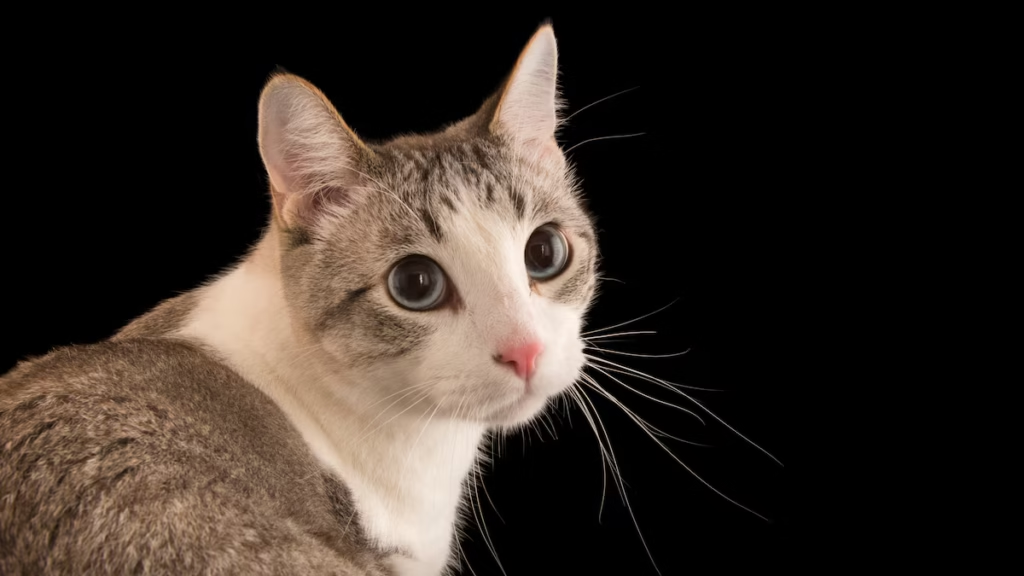The Domestic Cat : An Examination of Behavioral Biology and Modern Husbandry
An Examination of Behavioral Biology and Modern Husbandry
Abstract: The domestic cat, Felis catus, represents a unique and compelling subject of study in the field of animal domestication. As one of the world’s most ubiquitous companion animals, its proximity to humanity often masks a biological and behavioral framework that remains remarkably close to its wild progenitor. This article synthesizes current scientific understanding of the feline evolutionary trajectory, its distinct physiology as an obligate carnivore, the complex biomechanics and ethology of its vocalizations, and the evidence-based principles of its modern husbandry. By examining its incomplete domestication, the metabolic imperatives of its diet, the dual nature of its vocal communications, and the necessity of ethologically-informed care, we can construct a comprehensive portrait of this enigmatic species. This review asserts that a scientifically grounded appreciation for the cat’s inherent nature is fundamental to providing ethical and effective care in the domestic sphere.
I. Introduction: A Commensal Conundrum
The domestic cat is an animal of profound duality. It is both a familiar presence in millions of households globally and an enigmatic creature whose wild instincts persist just beneath a veneer of domesticity. Its pathway to cohabitation with humans presents a stark contrast to that of the dog (Canis lupus familiaris), which was largely shaped by active selection for specific utilitarian traits. The cat, conversely, embarked on a commensal relationship, a self-domestication process wherein proximity to humans offered mutual, often passive, benefits. This fundamental difference in origin is central to understanding the modern cat’s psychology and needs. Therefore, a central thesis emerges: effective and ethical feline husbandry requires a deep and scientifically informed appreciation of the cat’s semi-wild state. To simply treat Felis catus as a smaller, more independent version of other domesticated species is to ignore the potent biological and behavioral imperatives that define it. This article will explore these imperatives, tracing the cat’s journey from its evolutionary origins to the practical applications of that knowledge in contemporary animal care, providing a framework for responsible stewardship grounded in biological fact.
II. The Domestication Trajectory of Felis catus
A. Archaeological and Genetic Origins The story of the domestic cat begins not with human intervention, but with feline opportunism. Genetic analyses have definitively identified the primary ancestor as the Near Eastern and North African subspecies of wildcat, Felis silvestris lybica. This small, adaptable predator found a burgeoning ecological niche within the cradle of human civilization. The critical turning point occurred approximately 10,000 years ago in the Fertile Crescent, concurrent with the Neolithic Revolution. As humans transitioned from nomadic to sedentary lifestyles, they established agricultural settlements and, crucially, began storing grain. These granaries became magnets for commensal rodents, such as the house mouse (Mus musculus), creating a concentrated, reliable food source. This, in turn, attracted the local wildcats.
Archaeological evidence corroborates this timeline. While Egyptian art from 4,000 years ago famously depicts cats in domestic roles, earlier and more subtle clues exist. The most compelling of these is a 9,500-year-old human burial site in Cyprus, where the complete skeleton of a cat was found intentionally interred with a human. As Cyprus has no native wildcat populations, the animal must have been transported by boat, signifying a deliberate and valued association long before the age of the pharaohs. This evidence does not suggest full domestication as we now understand it, but rather a profound and established human-cat relationship. It was not a process of humans actively taming and breeding cats, but of wildcats with a higher tolerance for human proximity thriving in the new agricultural environment. Those that were less fearful were better hunters of the ubiquitous pests, and thus were tolerated, protected, and indirectly selected for tameness.
B. The Genetics of ‘Incomplete’ Domestication The term “incomplete domestication” is often applied to cats, and for sound genetic reasons. A 2014 whole-genome sequencing project comparing domestic cats to their wild cousins revealed a far more subtle set of genetic divergences than seen in dogs. While dogs exhibit dramatic genetic shifts related to morphology, diet, and complex social cognition, the changes in cats are more nuanced. The key genetic markers that differentiate Felis catus from Felis silvestris lybica are predominantly linked to behavior, particularly those genes influencing memory, fear conditioning, and reward-seeking behavior.
These genetic modifications appear to be associated with the development of the neural crest, a cluster of embryonic cells that influences everything from adrenal glands (regulating fear and stress response) to cartilage and pigmentation. The selection for tameness—a reduced flight response and increased sociability—is likely a mild form of the “domestication syndrome” seen more dramatically in other species. However, the fundamental genetic blueprint of the domestic cat remains that of a solitary, efficient predator. Its genome retains the full capacity for survival independent of humans, which explains its remarkable ability to successfully revert to a self-sustaining feral state within a single generation. This genetic reality underscores that the domestic cat is not a human creation in the same way as a dog, but rather a wild animal that has adapted to a specific, human-created niche while relinquishing very little of its core nature.
III. The Physiological Imperative: The Obligate Carnivore
A. Metabolic Specializations The single most important physiological principle governing feline health is its status as an obligate, or “true,” carnivore. This is not a dietary preference but a biological necessity dictated by millions of years of evolution. As hypercarnivores, their natural diet consists of more than 70% animal tissue. Their entire metabolism is finely tuned to this intake. Unlike omnivores or herbivores, which utilize carbohydrates as a primary energy source, cats have a high metabolic requirement for protein. They employ a process called gluconeogenesis, primarily using amino acids from protein to maintain blood glucose levels, a role carbohydrates play in other mammals.
Their gastrointestinal tract is a testament to this specialization. It is comparatively short and highly acidic, designed for the rapid breakdown of protein and fat and the neutralization of ingested pathogens. It is notably ill-equipped to handle significant amounts of plant matter; cats lack the enzymatic machinery to efficiently digest and derive nutrients from fibrous plant cell walls. This specialized digestive system means that diets high in carbohydrates can place an undue metabolic burden on the cat, contributing to health issues such as obesity and diabetes mellitus.
B. Essential Nutrient Dependencies The cat’s reliance on a meat-based diet extends to a number of specific micronutrients which their bodies cannot synthesize from plant-based precursors.
- Taurine: This amino acid is perhaps the most critical. While most mammals can synthesize sufficient taurine from other sulfur-containing amino acids (cysteine and methionine), cats have a very low activity of the necessary enzymes. Taurine is abundant in animal muscle, heart, and brain tissue. A deficiency leads to severe and often irreversible health consequences, including feline central retinal degeneration (leading to blindness) and dilated cardiomyopathy (a weakening of the heart muscle that results in fatal heart failure).
- Vitamin A (Retinol): Cats lack the intestinal enzyme required to convert plant-derived beta-carotene into active Vitamin A (retinol). They must consume pre-formed retinol, which is found almost exclusively in animal sources, particularly liver and fat. Vitamin A is vital for vision, immune function, and epithelial tissue maintenance.
- Arachidonic Acid: This is an essential omega-6 fatty acid that plays a key role in inflammatory response, skin health, and gastrointestinal function. While omnivores like dogs can synthesize it from linoleic acid found in plants, cats must obtain it directly from animal fats.
- Other Needs: Felines also have a higher requirement for several B vitamins, including niacin (which they cannot synthesize from tryptophan) and pyridoxine (Vitamin B6), reflecting their high-protein metabolism. These specific and unalterable requirements are the scientific basis for recommending professionally formulated, meat-based diets for all domestic cats.
IV. The Biomechanics and Ethology of Feline Vocalization
A. The Purr: A Low-Frequency Enigma The feline purr is a unique vocalization, remarkable in both its production and its purpose. Early theories suggesting it was a hemodynamic sound generated by blood flow have been thoroughly debunked. The current leading hypothesis points to a sophisticated neuromuscular and anatomical mechanism. It is believed to originate from a “neural oscillator” within the cat’s brain that sends rhythmic signals, approximately 20-30 per second (20-30 Hz), to the intrinsic muscles of the larynx. These muscles rapidly adduct and abduct the glottis, causing the vocal folds to vibrate during both the ingress (inhalation) and egress (exhalation) of air, creating the continuous, low-frequency sound. More recent research suggests this may be augmented by the presence of large “connective tissue pads” embedded within the vocal folds. These pads may allow the folds to oscillate at the characteristic purr frequency without constant, active muscle contraction, acting as a passive resonator.
The ethological significance of the purr is equally complex. It is far more than a simple expression of contentment. While cats certainly purr in pleasurable situations, it is also frequently observed in contexts of pain, stress, or fear, such as during veterinary examinations or while giving birth. This suggests the purr functions as a self-soothing or appeasement signal. Kittens purr while nursing, likely signaling to the mother that all is well and encouraging continued care. The frequency range of the purr (25-150 Hz) overlaps with frequencies known in human medicine to promote bone density and healing. This has led to the compelling, though not yet definitively proven, theory that purring may serve a physiological healing function, conserving energy while stimulating tissue repair.
B. The Meow: A Human-Directed Communication In stark contrast to the innate purr, the “meow” is a vocalization primarily developed and refined for interspecies communication, specifically with humans. While kittens meow to solicit care from their mothers, adult cats in feral colonies rarely meow at one another, relying instead on a repertoire of body language, scent, hisses, and growls. The persistence of the meow into adulthood appears to be a neotenic (juvenile) trait that domestic cats have learned is highly effective at manipulating human behavior.
Acoustic analyses reveal that the domestic cat’s meow has evolved to be more pleasing to the human ear than the vocalizations of its wildcat ancestor. Domestic meows are generally shorter in duration and higher in fundamental frequency, characteristics that may exploit human sensory biases for sounds associated with infants, thereby triggering a nurturing response. The meow functions as a classic example of operant conditioning; the cat learns that a specific vocalization can reliably produce a desired outcome, be it the opening of a door, the filling of a food bowl, or the initiation of social contact. Different meows can be developed for different contexts, creating a functional, if rudimentary, language between a cat and its owner.
V. Scientific Principles of Modern Feline Husbandry
A. Environmental Enrichment and Behavioral Management Providing for the modern domestic cat requires creating an environment that addresses its deeply ingrained, species-typical behaviors. The primary goal of environmental enrichment is to prevent the chronic stress, anxiety, and behavioral pathologies that arise when these innate drives are thwarted.
- Vertical Space: As both predator and prey animals, cats have a strong instinct to climb, survey their territory from a height, and seek secure refuge. Providing vertical space through cat trees, wall-mounted shelves, and window perches is not a luxury but a fundamental requirement for feline well-being.
- Resource Management: In the wild, cats do not eat, drink, and eliminate in the same location. Spatially separating food, water, and litter stations in the home mimics this natural behavior and reduces stress. In multi-cat households, the principle of providing resources in multiple locations (“one per cat, plus one extra”) is critical to preventing resource guarding and social conflict.
- Instinctual Outlets: The need to scratch is a non-negotiable behavioral imperative, serving to maintain claw health (shedding the outer nail sheath) and deposit scent for territorial marking. Providing a variety of sturdy, appropriate scratching substrates (e.g., sisal rope, corrugated cardboard, wood) is essential to redirect this behavior away from furniture. Furthermore, play should be structured to mimic the predatory sequence: stalking, chasing, pouncing, and culminating in a “kill bite” on a toy. This provides a crucial outlet for their predatory energy.
B. Health and Veterinary Oversight All aspects of feline husbandry must be underpinned by professional veterinary guidance. The selection of a diet must be based on the physiological principles of obligate carnivorism, utilizing high-quality, animal-based protein. Perhaps most critically, owners must understand that feline metabolism differs profoundly from human metabolism. Common human medications, particularly analgesics like paracetamol (acetaminophen), are highly toxic to cats as they lack the specific liver enzymes needed to metabolize them safely. All medical treatments must be prescribed and supervised by a veterinarian.
VI. Conclusion
The domestic cat, Felis catus, exists in a fascinating liminal state between wild instinct and domestic adaptation. Its journey alongside humanity was one of mutual convenience, leaving its core physiology as a specialized carnivore and its behavioral repertoire as a solitary predator largely intact. Its most characteristic vocalizations—the self-soothing purr and the human-directed meow—perfectly encapsulate its dual nature. Consequently, modern feline husbandry cannot be an exercise in anthropomorphism; it must be a science-based endeavor. By understanding and respecting the unalterable biological and ethological realities of the species, from its dietary needs to its spatial and behavioral requirements, we can provide a standard of care that allows this semi-wild creature to truly thrive within the human environment. Appreciating the wildness within is the foundational principle for fostering a healthy, enriching, and ethically sound human-feline bond
For articles about sports click here






Post Comment